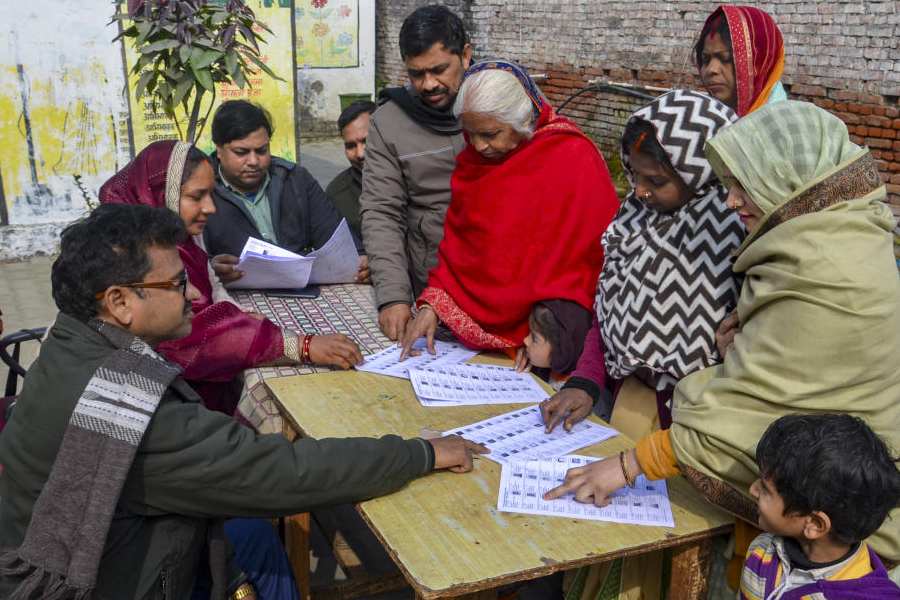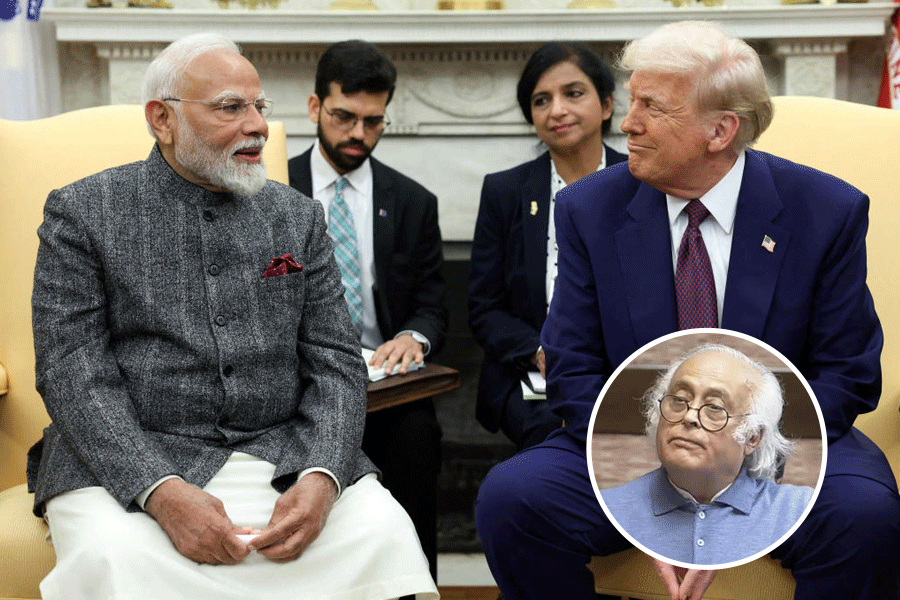|
|
| Out of sight, out of mind? |
Among the more charming aspects of life in Calcutta is the intimacy zone that springs up at dusk around Vivekananda Park, where young couples snatch anonymity and a few moments of togetherness. There is an admirable indulgence, or at least tolerance, where such displays of public affection are concerned, and many hawkers even survive on these twilight trysts. It is admirable because there is probably no other Indian metro where self-appointed guardians of public morality have not yet rushed in to banish heterosexual affection from the gaze of a public haunted by memories of a purported ?ancient Indian culture? and the spectre of ?loose Western womanhood?. In Bangalore?s Cubbon Park, lathi-wielding policemen make sure that all benches are lover-proof. Young boys in Delhi?s parks and Kerala?s villages begin their policing duties early in life by stoning couples who may be meeting even during the day.
Couples who are just colleagues returning from work are not spared in cities like Chennai, and there are some metros, such as Chandigarh, where men may even demand a piece of action from the man. Not so long ago, a group of 100 morally diligent citizens in Hyderabad formed the Federation of Culture Upgradation and Social Services (Focuss) to check the depraved activities of young people in public parks. They sought the help of the police to root out such activity and protect young teenagers (read girls) from being harassed by thugs and blackmailers.
So it is surely with some dismay that we read that Calcutta, so eager to embrace the ways of India?s more economically successful cities, is making preliminary efforts to control the use of the ubiquitous umbrella ? another lovable Calcutta institution, often used against dirty old men in parks. Dismay, since I can think of no other metro where the female body is not routinely violated or public life brutalized in the midst of the pressing crowds, heat and the unavoidable closeness of life that daily life entails in Calcutta. This is no mean cultural achievement, and one that must be treasured and nurtured, rather than uprooted from the public realm for another imagined culture. (Of course, we must remember that this tolerance and humaneness is a cultural achievement that has not emerged out of a feminist movement, but springs from a more benign patriarchy and a gentler masculinity.)
Let us first of all remember that all the extraordinary vigilance about protecting a vague ?Indian public? from depravity is nothing but focused attention on consensual sexual activity. It is the very consensuality of these public affections that so deeply disturbs the guardians and stirs them to action. After all, if the sight of necking couples is offensive, surely the use of umbrellas should be encouraged, not proscribed! But in most cases, patriarchal control of the public space is aimed at penalizing the woman who dares to publicly exhibit her desire.
And what easier way than to impose dress codes for women? Regional cultural nationalism has long flourished by marking the body of the woman, whether by insisting Bengali women must be draped in saris rather than salwar kameezes, or that the chaste Tamil woman must abandon the comfort and ease of the ?North Indian? dress for the pavadai in Tamil Nadu. There can also be the reverse chauvinism that insists that a ?national? code of honour be imposed on the women of the Northeast who study in Delhi, to protect them from potential rapists and harassers.
This is why every expression of rage or anger over the rape of women in metros, as happened in Mumbai recently, or is happening in Kerala, is met with proscriptions on consensual sexuality and on female desire to restore to men what is rightfully theirs ? the streets and other public spaces. It also restores to men the right to harass women, often in the name of ?loving?, and as several recent murders of young women in Andhra Pradesh have shown, loving them to death. Some anthropologists in Kerala have even detected a form of ?courtship? in the routine harassment of women, almost echoing what popular cinema propagates.
It is tiresome for feminists to repeat that the reason for rape is never the so-called ?provocation? of female clothing, for then we would have no way of explaining the fates of Imrana or the hundreds of young children and grandmothers who are raped by relatives, or the Mukhtaran Mais of India, namely lower caste women. who are routinely raped in the name of restoring caste honour. We would have no way of explaining the gang-rapes on trains, in police stations, and in guest houses frequented by politicians. Both the Kerala and Mumbai dress codes for women that have been recently announced are nothing if not attempts to dismantle the more sexually active roles that women may be taking on, as a result of feminism and perhaps also in response to the widespread sexualization of the visual field.
It was barely a century ago when the erotic appeal of the upper caste Kerala woman was enhanced by her wearing a blouse when the sartorial norm was the bare bosom. Over the last century, a ?modest? covering of the female body in Kerala has been achieved, but this has done nothing to stem aggressive and violent masculinity from asserting itself to make the state singularly unsafe for women. Even the formless ?nightie? that has become a staple of the working class women?s wardrobe, and parallels the burqa in its concealments, is no guarantee against harassment.
The aggressive move to return metropolitan women to dubious concealment and the even more dubious safety of their homes ? easily the most dangerous place for women in India ? is designed to restore male privileges that are being shaken. As more and more women are being invited to the workplace and to be independent consumers, their new-found freedoms or independence will clash with the beliefs of those who reassert a patriarchal family order. Visitors to China have reported not only its determined economic transformation but also its relative tolerance of young couples: the city of Dalian welcomes visitors to the City of Romance.
These changes have, by no means, come at a cheap price. In many parts of China, women are still the target of national policies of family control. Yet, China?s self-respect nowhere flaunts its links with an equally ?ancient? culture as India?s. Neither does it share the record of the sleazy trafficking in women that is the hallmark of many of its neighbours.
A cultural revolution that draws on and makes a ?national popular? of Calcutta?s unique tolerance of, and respect for, consensual sexualities ? as signified by the courting couples of Vivekananda Park ? may not change West Bengal?s GDP. But it will go a long way in showing that there are cultural achievements in our present that are worth protecting and even emulating.












